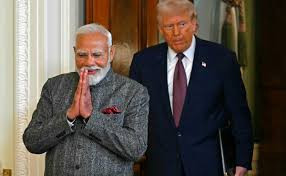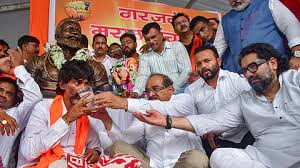“Rajnath Singh Delivers Firm Message to China at SCO: ‘Avoid New Complexities’ as Kailash Yatra Resumes”

IIE DIGITAL DESK : The Shanghai Cooperation Organisation (SCO) defence ministers’ meeting in Qingdao on June 27, India’s Defence Minister Rajnath Singh met his Chinese counterpart, Admiral Dong Jun, to press for stability and clarity in bilateral ties—while celebrating a long-awaited spiritual milestone.
In what New Delhi framed as a “constructive and forward-looking exchange,” Singh emphasized to Admiral Dong that both nations must “maintain positive momentum and avoid adding new complexities” to their relationship . This diplomatic nudge underscores a cautious thaw following years of tension along the Line of Actual Control (LAC), particularly since the Galwan Valley clashes in 2020.
The call to prevent fresh complications echoes broader efforts to rebuild trust, as reaffirmed by India’s National Security Advisor Ajit Doval’s recent meeting with Chinese Foreign Minister Wang Yi on June 23, aimed at strengthening people-to-people engagement .
One major outcome of the talks was the announcement that the Kailash Mansarovar Yatra will resume, after nearly six years of suspension due to COVID-19 and the border standoff . Singh voiced his "happiness" over this development, marking the resumption as a hopeful sign of improving relations.
Precise details remain unreported, but diplomatic sources suggest pilgrims could begin crossing through the Lipulekh Pass by early July, aligning with earlier timelines flagged in Chinese-state outlets .For India, the reopening of this ancient pilgrimage route holds deep religious and people-to-people significance, showcasing how spirituality and diplomacy can intertwine.
To symbolise goodwill, Singh presented Admiral Dong with a traditional Madhubani painting from Bihar, reflecting the shared cultural heritage and mutual respect India hopes to build upon . The colourful artwork underscores a softer, human side to diplomatic engagement.
Much of Singh’s SCO tenure has been dominated by security concerns, particularly terrorism. While no joint communique was released at the end of the meeting—India openly withheld its signature, objecting to the omission of reference to the recent April terror attack in Pahalgam—Singh used the platform to insist that terrorism remains a core multilateral issue .
Responding to Pakistan-linked terror threats during the summit, he warned that “terror epicentres are no longer safe”, referencing groups such as Lashkar-e-Taiba and the Resistance Front in the Kashmir incident . Moreover, India urged SCO partners to hold accountable any states providing “safe havens” to terrorists.
This meeting also marked the first defence-level interaction between Singh and Admiral Dong since India and China agreed on troop disengagement along the LAC in Ladakh . It reinforces the narrative that military-to-military channels are gradually reopening, although full trust remains a work in progress.
The significance of the Qingdao interaction lies in its balanced tone—firm yet constructive, avoiding escalation while addressing core concerns head-on. By blending spiritual outreach, cultural diplomacy, and strict national interests, India signals a strategy of measured engagement.
At the SCO sidelines, Rajnath Singh struck a delicate balance—asserting India’s resolve against emerging threats, urging China to avoid destabilisation, and nurturing the resumption of the Kailash Mansarovar pilgrimage. It's a cautious but clear pivot: diplomat-turned-defence-minister, Singh wields cultural soft power alongside security imperatives, navigating the fine line between firmness and dialogue in one of India’s most important bilateral relationships.
You might also like!
















